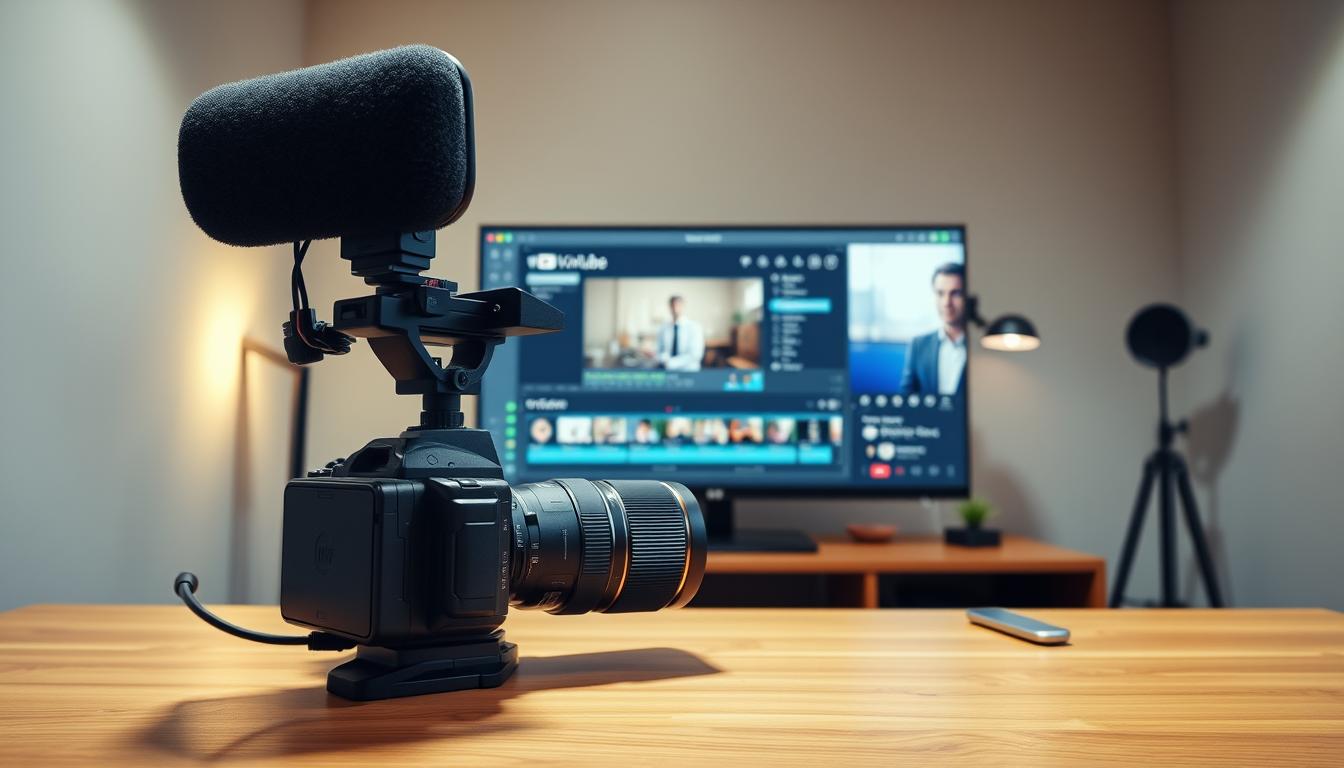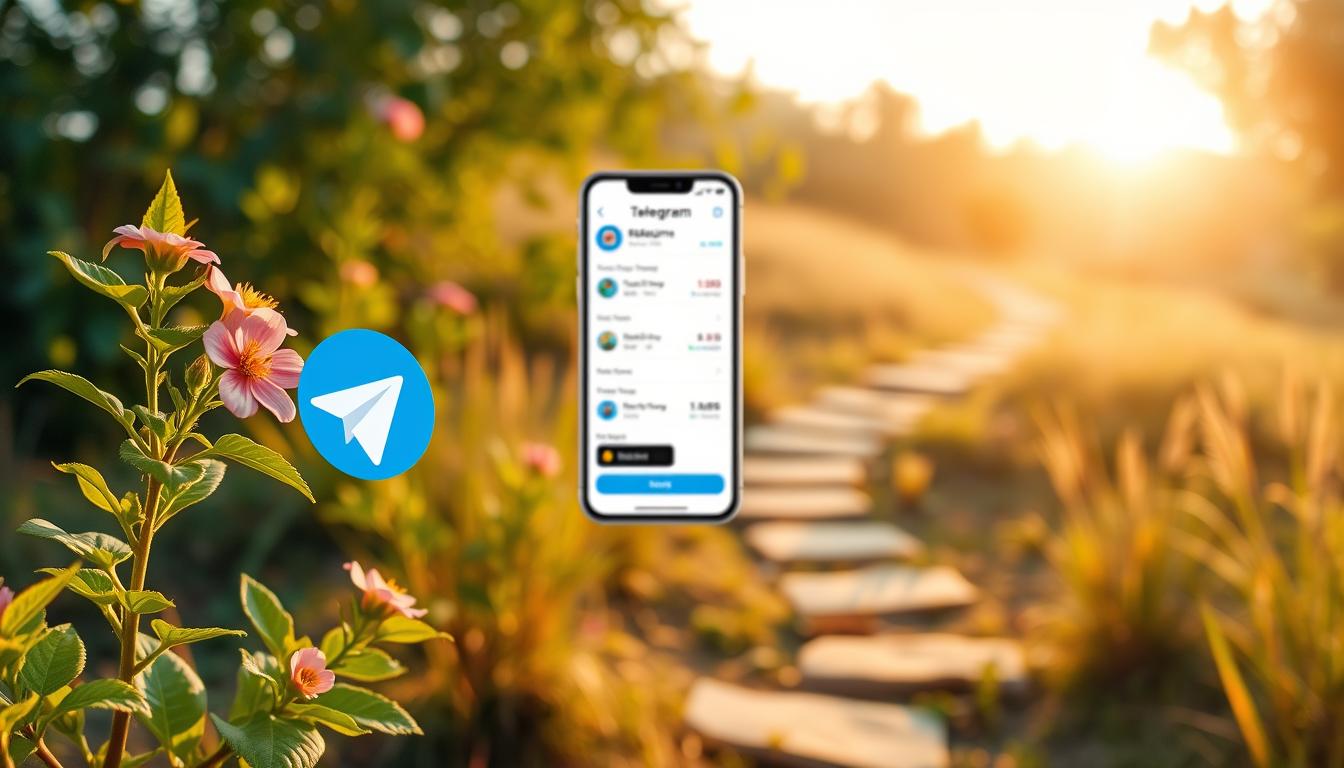To launch a successful YouTube channel in 2025, you need a strategy that combines high-quality video production with smart SEO. This guide covers the essentials: from setting up your account and choosing the right equipment to leveraging YouTube Shorts optimization and analyzing Audience Retention graphs for maximum growth.
Did you know that over two billion people visit YouTube every month, watching more than a billion hours of video content daily? With 37 million channels out there, creating a successful one requires more than just uploading videos. You need a strategic plan to stand out and attract your target audience.
Welcome to your comprehensive guide on setting up a channel that ranks in search results and resonates with viewers. In this article, we’ll walk you through the essential steps to create a thriving media presence, from setting up your account to optimizing your content for maximum visibility.
Key Takeaways
- Understand the basics of creating a successful channel from day one.
- Learn how to avoid common mistakes that limit your audience growth.
- Discover advanced SEO techniques to boost your video content visibility.
- Get a clear roadmap to launch your channel with confidence.
- Make strategic decisions that align with your goals and target audience.
Why YouTube Matters for Content Creators in 2025

For content creators, YouTube is more than just a video-sharing platform – it’s a gateway to a vast audience of over 2 billion monthly active users. By creating a YouTube channel, you’re tapping into this massive user base, potentially reaching millions of viewers who are actively searching for content like yours.
The Massive Reach and Engagement Potential
YouTube isn’t just another social media platform; it’s the second-largest search engine in the world, offering incredible opportunities for creators in 2025. The platform’s sophisticated recommendation algorithm helps connect your channel with viewers who are most likely to enjoy your specific type of content. Unlike other platforms where video content quickly disappears from feeds, YouTube videos can continue generating views, subscribers, and engagement for years after publishing.
Opportunities Beyond Video Sharing
Beyond just sharing videos, YouTube offers multiple ways to build your business through sponsorships, affiliate marketing, merchandise sales, and the YouTube Partner Program. The platform provides detailed analytics that help you understand your audience better than most other social media platforms, allowing you to refine your content strategy. YouTube’s integration with Google means your video content can appear in regular search results, dramatically expanding your reach beyond the platform itself.
| Benefits of YouTube for Creators | Description |
|---|---|
| Massive Audience | Over 2 billion monthly active users |
| Long-Term Engagement | Videos can generate views and engagement for years |
| Monetization Opportunities | Sponsorships, affiliate marketing, merchandise sales, and YouTube Partner Program |
| Detailed Analytics | Helps understand audience and refine content strategy |
Setting Clear Goals for Your YouTube Channel
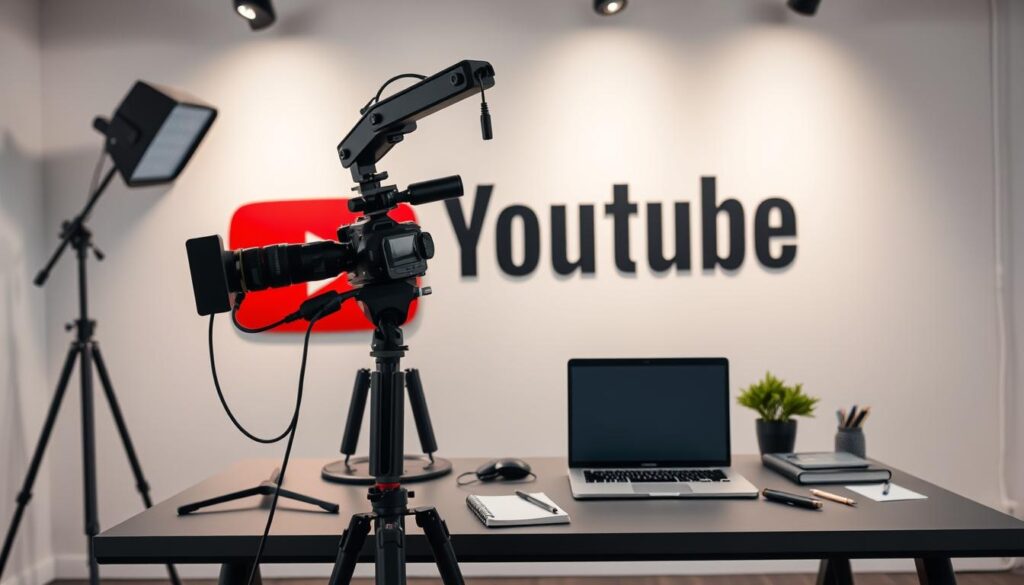
To launch a YouTube channel that ranks, you need to start by setting clear, measurable goals. Before creating your first video, spend some time thinking about what you hope to achieve. Do you plan to use your videos to sell products? Do you want to drive traffic to your website, podcast, or some other project? Or do you simply want to grow your audience?
Establishing clear goals will help shape everything from your content style to your posting schedule. Whether you’re looking to build a personal brand, drive traffic to a website, or generate revenue, your goals will guide your channel strategy.
Defining Your Purpose and Vision
Take time to define your channel’s unique purpose and vision. What specific value will you provide that viewers can’t get elsewhere? Consider what sets your channel apart and how you can consistently deliver that to your audience.
- Identify your niche and the type of content that will resonate with your target audience.
- Determine what actions you want viewers to take after watching your videos.
Identifying Your Target Audience
Creating an audience persona worksheet can help you identify exactly who you’re creating content for, making your videos more targeted and effective. Consider both short-term goals (like publishing your first 10 videos) and long-term ambitions (like reaching 10,000 subscribers) to keep yourself motivated.
- Research your target audience’s demographics, interests, and pain points.
- Understand the specific problems, questions, and interests your content will address.
Remember that successful youtube channel goals are specific and measurable. Instead of a vague goal like “grow my audience,” aim for something concrete like “reach 1,000 subscribers in six months.” This will give you a clear direction for your channel strategy.
Finding Your Niche: The Key to Standing Out

In a sea of 37 million YouTube channels, finding your niche is crucial for standing out and attracting a dedicated audience. Your niche should be a specific area where you can excel and add significant value. It’s about being known for something particular before you can potentially expand your content later.
To identify your niche, you need to understand what you’re passionate about and what you’re good at. This could be anything from cooking, DIY tutorials, or even financial advice. The key is to find a balance between what you enjoy talking about and what your audience is interested in watching.
Researching Competitor Channels
Researching competitor channels is a vital step in finding your niche. It’s not about copying their content, but rather understanding what’s working for them and where the gaps are. You can use tools like TubeBuddy or vidIQ to analyze their performance and identify opportunities.
| Niche | Competitor Channels | Content Opportunities |
|---|---|---|
| Cooking | Binging with Babish, Tasty | Unique recipes, cooking challenges |
| Financial Advice | Graham Stephan, The Financial Diet | Budgeting tips, investment strategies |
| DIY Tutorials | Home Repair Tutor, The King of Random | Creative projects, home improvement |
Identifying Content Gaps and Opportunities
Once you’ve researched your competitors, it’s time to identify content gaps and opportunities. Look for topics that are missing or areas where you can provide a fresh perspective. This could be a unique angle on a popular topic or covering a niche within a niche.
Key strategies for finding your niche include:
- Combining two interests to create a unique position in the market
- Paying attention to search volume for topics in your niche
- Using tools like TubeBuddy or vidIQ to identify trending topics
By following these steps, you can find a niche that sets you apart and attracts a loyal audience. Remember, your niche is the foundation of your YouTube channel’s success, so take the time to get it right.
YouTube Channel Setup: Step-by-Step Guide

A well-set-up YouTube channel is the foundation of your online presence, and we’re here to walk you through the process. Setting up your channel correctly from the beginning saves you time and headaches later.
Creating Your Google Account
If you don’t already have a Google account, you’ll need to create one. This account will be the gateway to your YouTube channel. Having a Google account allows you to access various Google services, including YouTube, with a single sign-in. If you already have a Google account, you can skip this step and proceed to creating your YouTube channel.
Setting Up Your Channel Name and Handle
Once you have your Google account set up, it’s time to choose a name for your YouTube channel. Your channel name should be memorable, relevant to your content, and available as a handle (@username) for easier discovery. You have the option to create either a personal channel using your name or a brand account with a custom name. Brand accounts offer more flexibility and allow multiple managers.
Channel Verification and Settings
After creating your channel, you’ll need to verify it by phone to unlock additional features such as custom thumbnails and videos longer than 15 minutes. Verification is a crucial step that enhances your channel’s capabilities. Furthermore, take time to configure important settings like default privacy options, notification preferences, and channel keywords in the YouTube Studio dashboard.
To start setting up your YouTube channel, sign into YouTube, click your profile picture in the top right corner, and then click the “Create a channel” link. You’ll be guided through the process, and with these steps, you’ll have your channel up and running in no time.
Branding Your Channel for Professional Appeal
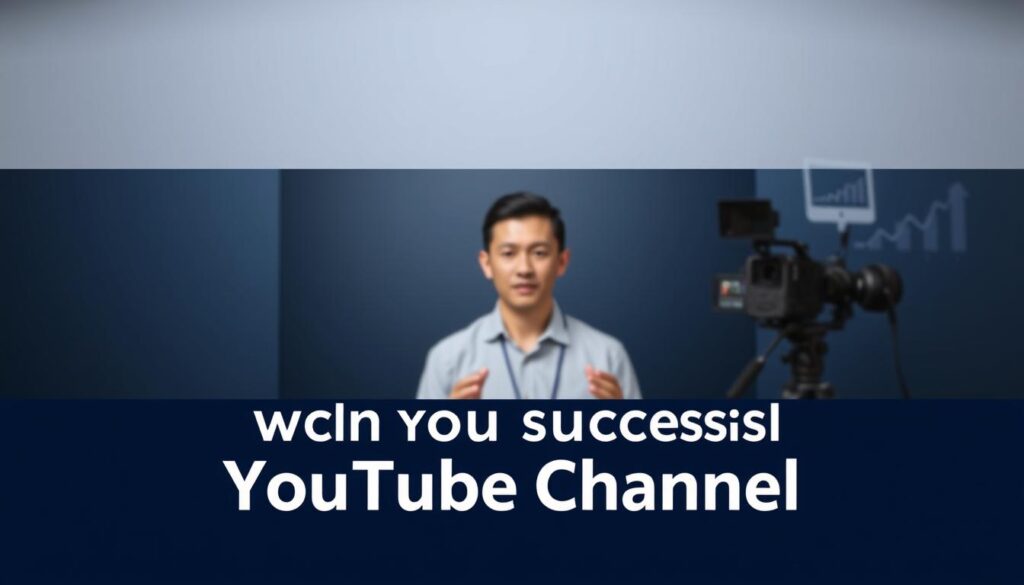
Establishing a strong brand identity is crucial for making your YouTube channel stand out in a crowded online space. Your channel’s visual branding creates the crucial first impression that can either attract or repel potential subscribers.
To create a professional appeal, focus on three key elements: your channel banner, profile picture, and channel description. Let’s dive into each of these components.
Designing an Eye-Catching Banner
Your channel’s banner is the first thing viewers see when they visit your page. It’s a thin rectangular image that appears at the top of your channel’s page, with dimensions of 2560 x 1440 pixels. To make it effective, ensure key elements fall within the “safe zone” of 1540 x 427 pixels. This space gives you room to showcase your brand‘s personality and content focus. Use this opportunity to add your logo, brand colors, and other images that represent your brand.
Creating a Memorable Profile Picture
Your profile picture should be simple and recognizable even at small sizes. Many creators use a close-up photo or a simple logo that represents their brand. This image will be displayed next to your videos and in search results, making it a crucial element in establishing your channel‘s identity.
Writing an Effective Channel Description
Your channel description isn’t just for viewers; it’s also important for YouTube’s algorithm. Include relevant keywords while clearly explaining what value your channel provides to your audience. This will help attract the right viewers and improve your video’s visibility in search results.
Consistency across all branding elements helps viewers instantly recognize your content in search results and recommendations. Consider creating custom thumbnail templates that match your channel‘s visual style for a cohesive, professional look across all your videos. Good branding isn’t about being flashy; it’s about clearly communicating what makes your channel unique and valuable to your target audience.
Essential Equipment for Quality Videos

As a YouTube beginner, understanding the essential equipment needed can significantly improve your video quality. While it’s technically possible to record videos with your phone, the production value won’t be high, and you’ll struggle to attract viewers for your channel.
You don’t have to spend a lot of money on video equipment, but it’s a good idea to spend a little. An inexpensive camera can go a long way in enhancing your content. Many successful channel owners started with basic gear and upgraded gradually as they grew.
Budget-Friendly Camera Options
Your smartphone can be a perfectly acceptable camera to begin with, especially when paired with a simple tripod for stability and better framing. This way, you can start creating content without investing in expensive tools.
Audio Equipment That Makes a Difference
Audio quality often matters more than video quality – viewers will tolerate average visuals but will quickly click away from videos with poor sound. Budget-friendly microphone options like the Samson Q2U ($60-80) or Audio-Technica ATR2100 ($80-100) can dramatically improve your audio without breaking the bank.
Lighting Setup for Professional-Looking Videos
Good lighting makes even basic cameras look better – a simple ring light or two softbox lights can eliminate unflattering shadows and create a more professional look for your channel. This is a crucial step in enhancing the overall quality of your content.
Remember, consistent content is more important than perfect production – it’s better to publish regularly with decent quality than to delay while trying to achieve perfection. As your channel grows, consider strategic equipment upgrades based on your specific content needs.
Planning Your Content Strategy

Before diving into video creation, it’s crucial to plan your content strategy for a successful YouTube channel. A little bit of planning can help you work efficiently and save you a lot of time in the future.
As stated by
Rand Fishkin, “Content is the lifeblood of any successful marketing strategy.”
This emphasizes the importance of having a well-thought-out content plan. A well-plannedcontent strategyis the foundation of any successful YouTube channel, helping you stay consistent and focused on your goals.
Different Types of YouTube Content
Start by exploring different types of content that perform well in your niche. Tutorials, vlogs, reviews, interviews, or entertainment videos all have different production requirements and audience expectations. Understanding your audience’s preferences is key to creating engaging videos. Additionally, don’t overlook YouTube Shorts optimization; short-form videos are a powerful way to reach new viewers and funnel them to your long-form content.
Creating a Content Calendar
Creating a content calendar helps you plan ahead, maintain a consistent posting schedule, and align your content with seasonal trends or important events in your niche. This tool is essential for organizing your content and ensuring that your YouTube channel remains active and engaging.
Batch Recording for Efficiency
Batch recording (creating multiple videos in one session) can dramatically improve your efficiency and help maintain a consistent posting schedule even during busy periods. This technique allows you to manage your time more effectively and keep your audience engaged with regular uploads.
By implementing these strategies, you can develop a robust content plan that resonates with your audience and sets your YouTube channel up for success.
Creating Your First YouTube Video
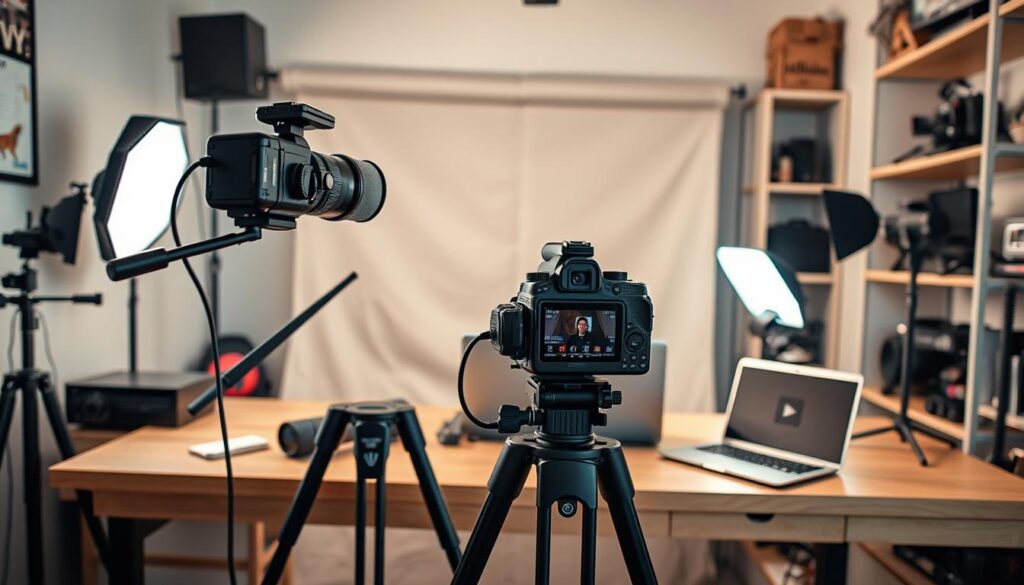
Producing your first YouTube video might seem intimidating, but breaking it down into manageable steps makes the process much more approachable. Your first video is a crucial step in establishing your channel, and with the right approach, you can captivate your audience from the start.
Structuring Your Video for Engagement
Just like a podcast needs intros and outros, so does a video. This creates structure that helps your viewers follow your content. Use your introduction to capture their attention and introduce the video’s topic. Structure your video with a strong hook in the first 15 seconds to grab attention, followed by a brief introduction explaining what viewers will learn or experience.
The middle section should deliver on your video’s promise with clear, engaging content that keeps viewers watching. Remember that audience retention is a key metric for YouTube’s algorithm. End with a strong call-to-action telling viewers exactly what to do next (subscribe, watch another video, leave a comment) and a preview of upcoming content.
| Video Section | Purpose | Key Elements |
|---|---|---|
| Introduction | Capture attention and introduce the topic | Strong hook, brief overview |
| Middle Section | Deliver on the video’s promise | Clear, engaging content |
| Conclusion | Encourage action and preview future content | Call-to-action, preview of next video |
Recording Tips for Beginners
When recording, position yourself in good natural light if possible, minimize background noise, and speak slightly more energetically than feels natural – cameras tend to flatten energy levels. Take your time to prepare and rehearse your lines to ensure a smooth delivery.
Basic Editing Techniques
Basic editing doesn’t need to be complicated. Focus on cutting out mistakes, tightening pacing, and adding simple text or graphics to emphasize key points using tools like video editing software. In fact, many creators now use AI video editors to automate tedious tasks like trimming silence or adding captions, which can significantly speed up your workflow. Don’t aim for perfection with your first video – the goal is to start creating content and improve with each upload as you become more comfortable on camera and with the editing process.
By following these steps and structuring your channel with engaging videos, you’ll be well on your way to building a loyal audience and growing your presence on YouTube.
YouTube SEO: Making Your Videos Discoverable
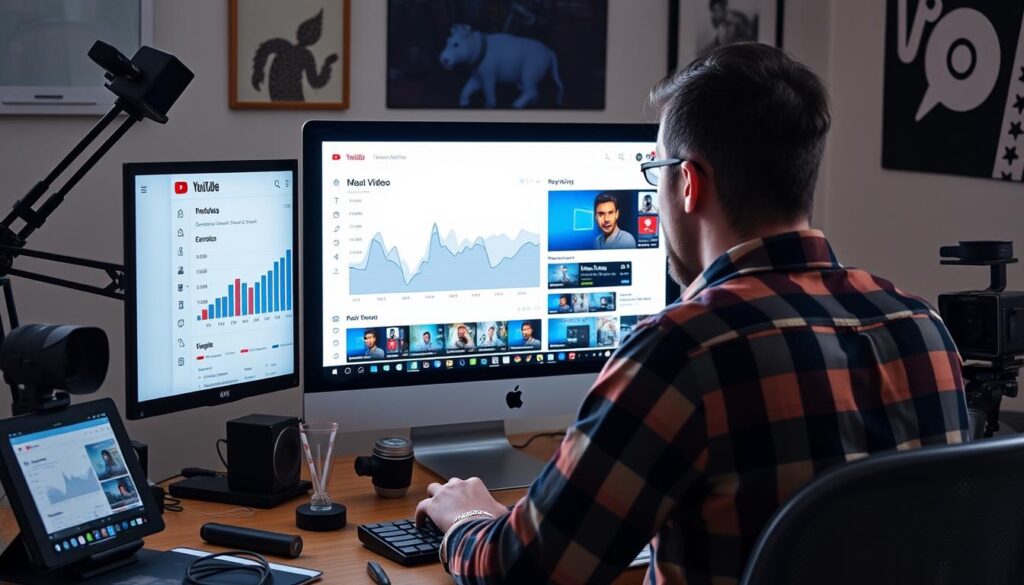
YouTube isn’t just a video-sharing platform; it’s also a search engine that demands SEO optimization. To get your videos seen by the right people, you need to make sure they’re discoverable. This means understanding how YouTube’s algorithm works and optimizing your content accordingly.
Keyword Research for YouTube
The first step in YouTube SEO is keyword research. You need to understand what terms your target audience is searching for. Tools like TubeBuddy, vidIQ, or even YouTube’s own search suggestions can help identify valuable keywords. Consider the words your audience would use to find your videos, and use them in your titles and descriptions.
Optimizing Titles, Descriptions, and Tags
Your video title should include your main keyword while still being compelling enough to encourage clicks. Aim for clarity over clickbait. Craft descriptions that front-load important keywords in the first 1-2 sentences, providing valuable context about your video’s content. Don’t forget to use tags – a mix of specific and broader terms related to your content can help. Also, utilize timestamps in your description to create Video Chapters (Key Moments); these help Google index specific parts of your video and improve the user experience. For more detailed information on YouTube SEO, check out this guide on YouTube SEO.
Using Cards and End Screens Effectively
Cards and end screens are powerful tools for keeping viewers on your channel longer. Use them strategically to suggest related videos or playlists that match the viewer’s interests. This not only improves viewer engagement but also helps with search rankings, as watch time and audience retention are major ranking factors.
To summarize, YouTube SEO is crucial for helping your videos get discovered. By doing keyword research, optimizing your titles, descriptions, and tags, and using cards and end screens effectively, you can improve your video’s visibility and reach your target audience. Remember, YouTube SEO is not a one-time task; it’s an ongoing process that requires continuous optimization and improvement.
Creating Thumbnails That Drive Clicks
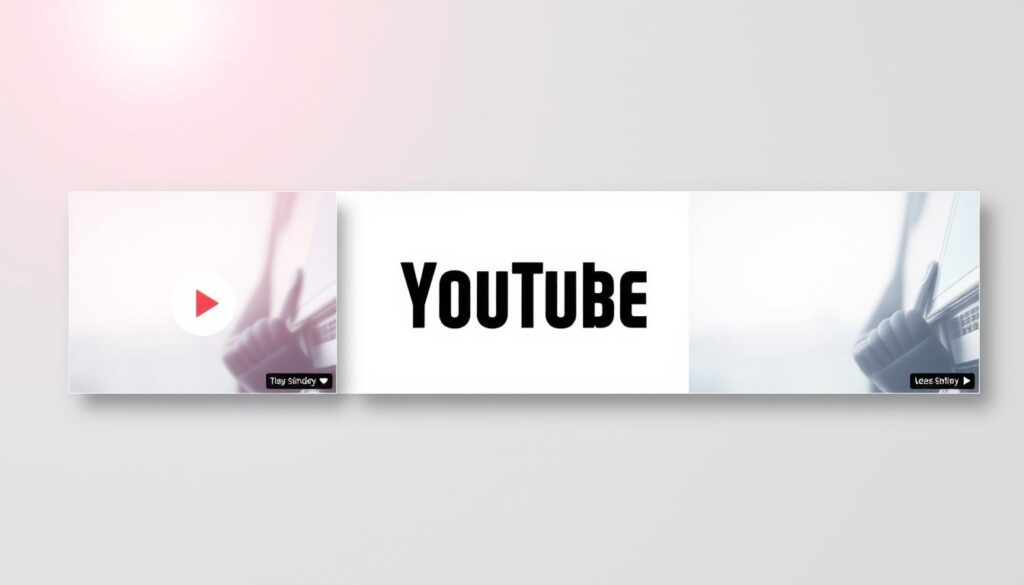
When it comes to YouTube, your video thumbnail is like a storefront window display – it needs to be enticing to draw people in. Your thumbnail is the first thing potential viewers see, and it plays a crucial role in whether they decide to click on your video or keep scrolling.
To create effective thumbnails, you need to understand what makes them compelling. Effective thumbnails combine eye-catching visuals with clear text that communicates the video’s value proposition at a glance. Here are some best practices to follow:
Thumbnail Design Best Practices
- Use high contrast colors to make your thumbnail stand out.
- Include faces when relevant, as humans are naturally drawn to faces.
- Keep text large and limited to 3-4 words.
- Maintain consistent branding elements across your thumbnails to build recognition.
It’s also important to remember that thumbnails appear in different sizes across devices. What looks clear on your computer might be unreadable on a mobile phone. Always verify how your thumbnails look in search results and recommendations to ensure they stand out in a crowded feed.
Tools for Creating Professional Thumbnails
You don’t need to be a professional designer to create great thumbnails. Tools like Canva, Adobe Express, or even PowerPoint offer templates and easy-to-use features for creating professional-looking thumbnails. These tools can help you design thumbnails that are not only visually appealing but also optimized for click-through rates.
To maximize your thumbnail’s effectiveness, test different thumbnail styles with similar videos to see what drives more clicks for your specific audience and channel niche. By continually refining your thumbnail strategy, you can improve your channel’s overall performance and grow your audience.
Building Your Audience Through Engagement
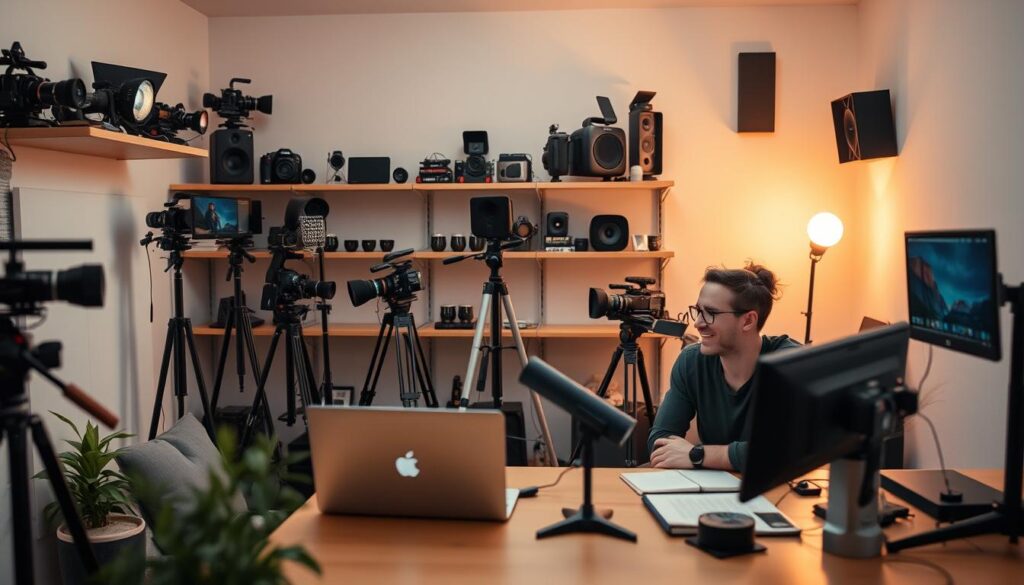
Engaging with your audience is key to creating a successful YouTube channel. When you interact with your viewers, you build a loyal community that supports your content and helps your channel grow. YouTube’s algorithm also favors channels that have high engagement, as it indicates that the content is valuable and relevant.
Responding to Comments and Building Community
Responding to comments on your videos is one of the simplest ways to build a community around your channel. By answering questions and engaging with your viewers, you show that you value their feedback and care about their opinions. It’s especially important to respond to comments within the first 24-48 hours after publishing a video, as this helps to create a sense of community and encourages more viewers to join the conversation.
To encourage more comments, you can ask specific questions in your videos. Instead of asking a generic question like “let me know what you think,” try asking something more specific like “which of these three tips will you try first?” Additionally, implementing a robust Community Tab strategy allows you to poll your audience, share behind-the-scenes updates, and keep the conversation going even on days when you don’t upload a new video.
| Engagement Strategy | Benefits |
|---|---|
| Responding to comments | Builds community, encourages more comments |
| Asking specific questions | Sparks conversation, increases engagement |
| Creating community posts | Maintains engagement between video uploads |
Collaborating with Other Creators
Collaborating with other creators in your niche is a great way to grow your audience and introduce your content to new viewers. When you collaborate with someone who has an existing audience, you can tap into their community and build your own following. To get the most out of a collaboration, focus on providing value to the other creator’s audience, rather than just promoting your own channel.
By working together with other creators, you can create fresh and engaging content that appeals to a wider audience. This can help to increase your visibility on YouTube and attract new viewers to your channel.
Analyzing Performance with YouTube Analytics
To improve your YouTube channel, analyzing its performance through YouTube Analytics is essential. YouTube Analytics provides powerful insights that can help you understand what’s working on your channel and where you can improve.
Key Metrics to Track
To get the most out of YouTube Analytics, focus on key metrics such as watch time (total minutes viewed), audience retention (how long viewers stay watching), and CTR (Click-Through Rate). These metrics will give you a comprehensive understanding of your channel’s performance and help you identify areas for improvement. You can easily monitor these on the go using the YouTube Studio Mobile app.
Using Data to Improve Your Content
Don’t just collect data – use it to make strategic decisions about your content. For example, you can identify which video topics, lengths, or styles perform best with your audience by analyzing your watch time and retention rates.
- Pay special attention to Audience Retention graphs to identify weak points where viewers drop off.
- Compare metrics across similar videos to spot patterns, such as whether tutorials or vlogs perform better.
- Use the “Audience” tab to learn demographic information and viewing habits, helping you schedule uploads when your audience is most active.
By using data to inform your content strategy, you can create more engaging videos that resonate with your audience and grow your channel over time.
Monetization Strategies for Your Channel
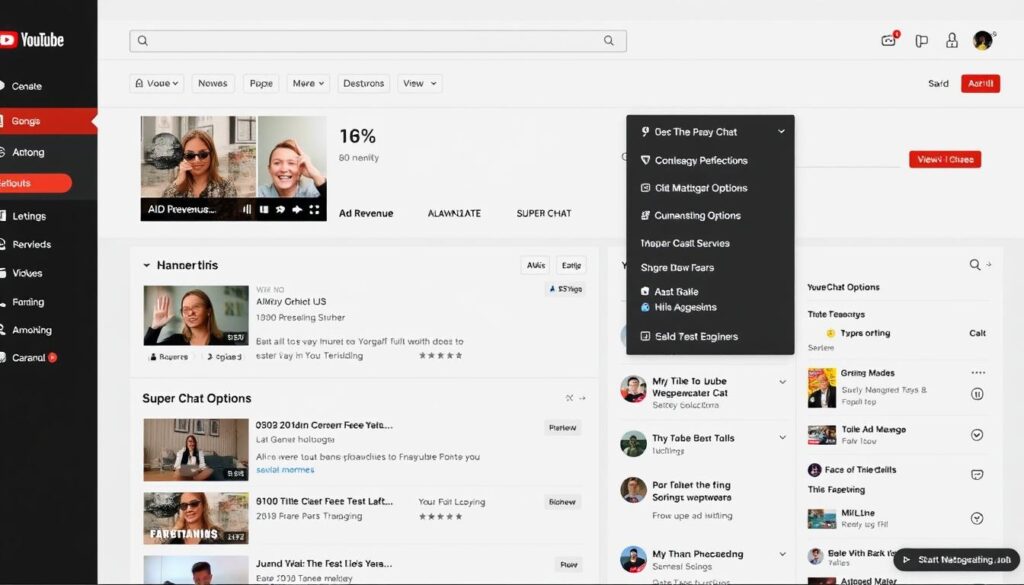
With the right approach, you can transform your YouTube channel into a lucrative business that generates significant revenue. YouTube offers several ways to earn money from your channel, but to access the full range of monetization features, you need to join the YouTube Partner Program (YPP).
YouTube Partner Program Requirements
To be eligible for the YPP, you must meet one of two thresholds: 1,000 subscribers and 4,000 valid public watch hours on your long-form videos in the last 12 months, or 1,000 subscribers and 10 million valid public Shorts views in the last 90 days.
Alternative Revenue Streams
While working toward YPP eligibility, you can explore alternative revenue streams like affiliate marketing, sponsored content, or selling your own digital products. These options can help you build a sustainable business beyond YouTube’s ad sharing program.
Building a Business Beyond YouTube
Think beyond ad revenue – many successful creators earn more from brand partnerships and their own products than from YouTube’s advertising program. Use your channel as a platform to build your personal brand and business, offering services like coaching, consulting, or creating courses.
By diversifying your revenue streams, you can create a more stable and profitable business. This approach will help you navigate the ever-changing landscape of YouTube’s policies and algorithms, ensuring that your channel remains a valuable asset.
Conclusion: Your Roadmap to YouTube Success
As you embark on your YouTube journey, remember that success is a marathon, not a sprint. Consistency and persistence are key to building a loyal audience and growing your channel.
Creating a high-quality content platform takes time and effort. You’ll need to produce numerous videos to establish a library that viewers can enjoy. This challenge is unavoidable, but with a clear vision and a commitment to quality, you can overcome it.
To succeed on YouTube, focus on creating value for your audience first, and the growth will follow. Viewers can tell when you’re genuinely trying to help, entertain, or inform them. Be patient with yourself and your channel’s growth, as it typically takes 6-12 months of consistent uploading before most channels see significant traction.
Stay flexible and willing to evolve your content based on audience feedback and performance data. The most successful channels adapt over time. Building a YouTube presence is a powerful way to establish yourself as an authority in your field and create opportunities beyond the platform itself.
Take the first step today by setting up your channel or recording a practice video. The sooner you start, the sooner you’ll build the skills and audience that lead to success. Remember, your unique perspective and approach are what will ultimately make your channel stand out – there’s room for your voice in the YouTube ecosystem.
FAQ
What are the basic requirements to create a YouTube account?
To create a YouTube account, you need a Google account, which can be set up using your email address and password. You also need to provide some basic information like your name, email address, and date of birth.
How do I choose a unique and memorable handle for my YouTube Channel?
When choosing a handle, consider a name that reflects your brand, is easy to spell, and is memorable. You can use a combination of your brand name and a relevant keyword to make it more discoverable.
What is the ideal size for a YouTube banner?
The recommended size for a YouTube banner is 2560 x 1440 pixels. However, the safe area for text and logos is 1235 x 338 pixels, as some parts of the banner may be cropped on different devices.
How often should I post videos on my YouTube Channel?
Consistency is key to growing your audience on YouTube. You can start by posting videos at a frequency that works for you, whether it’s once a week, twice a month, or daily, and adjust as needed based on your audience’s engagement.
What are some effective ways to promote my YouTube videos?
You can promote your YouTube videos by sharing them on social media platforms, engaging with your audience through comments and community posts, collaborating with other creators, and optimizing your video titles, descriptions, and tags for search.
How do I track the performance of my YouTube videos?
You can track the performance of your YouTube videos using YouTube Analytics, which provides insights into metrics like views, watch time, engagement, and earnings. You can use this data to refine your content strategy and improve your video performance.
What are some common mistakes to avoid when creating a YouTube Channel?
Some common mistakes to avoid include inconsistent branding, low-quality video production, poor optimization, and neglecting to engage with your audience. By focusing on quality content and audience engagement, you can build a loyal following on YouTube.
Can I monetize my YouTube Channel, and if so, how?
Yes, you can monetize your YouTube Channel through the YouTube Partner Program, which allows you to earn money from ads, sponsorships, and merchandise sales. You can also explore alternative revenue streams like affiliate marketing and memberships.
